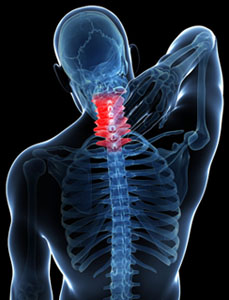 Cervical spondylopathy is caused by the degeneration of cervical intervertebral disc and secondary degeneration of intervertebral joints, which may affect spinal nerve roots, spinal cord, sympathetic nerves and vertebral arteries, resulting in a series of symptoms. Clinically, it is mainly manifested as localized pain on the head, neck, shoulder, arms and front chest, as well as progressive acrognosis and dyskinesia, for those having severe conditions, it can lead to paralysis of extremities.
Cervical spondylopathy is caused by the degeneration of cervical intervertebral disc and secondary degeneration of intervertebral joints, which may affect spinal nerve roots, spinal cord, sympathetic nerves and vertebral arteries, resulting in a series of symptoms. Clinically, it is mainly manifested as localized pain on the head, neck, shoulder, arms and front chest, as well as progressive acrognosis and dyskinesia, for those having severe conditions, it can lead to paralysis of extremities.
In TCM, it is called "stiffness of nape", "rheumatism involving the bone", "pain on the neck and shoulder", "pain on the shoulder and back". It is caused by failing to nourish tendons and bones due to the old age with weak constitution, deficiency of the liver and the kidney; or caused by qi exhaustion due to sitting too long, tendons and muscles hurting due to overfatigue; or caused by exopathogen affect the meridians; or caused by obstruction of the meridians of the neck due to sprain and injury which leading to stagnation of qi and blood. The main principle of treatment is expelling pathogenic wind and cold, activating the blood circulation and removing blood stasis, and dredging the tendon and meridian.
Cervical type cervicals pondylopathy
Nerve-root type cervical spondylosis
Vertebral artery type of cervical spondylosis
Sympathetic cervical
Cervical spondylotic myelopathy
Mixed type cervical spondylosis